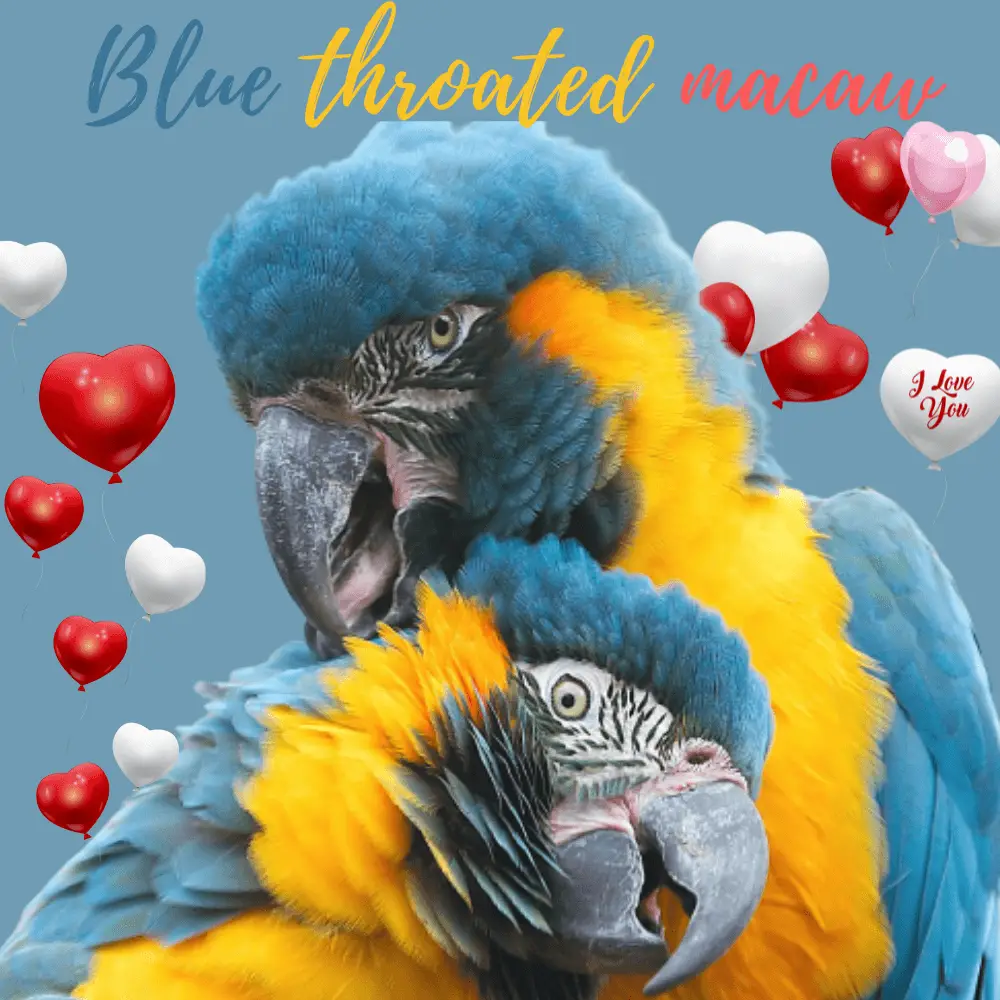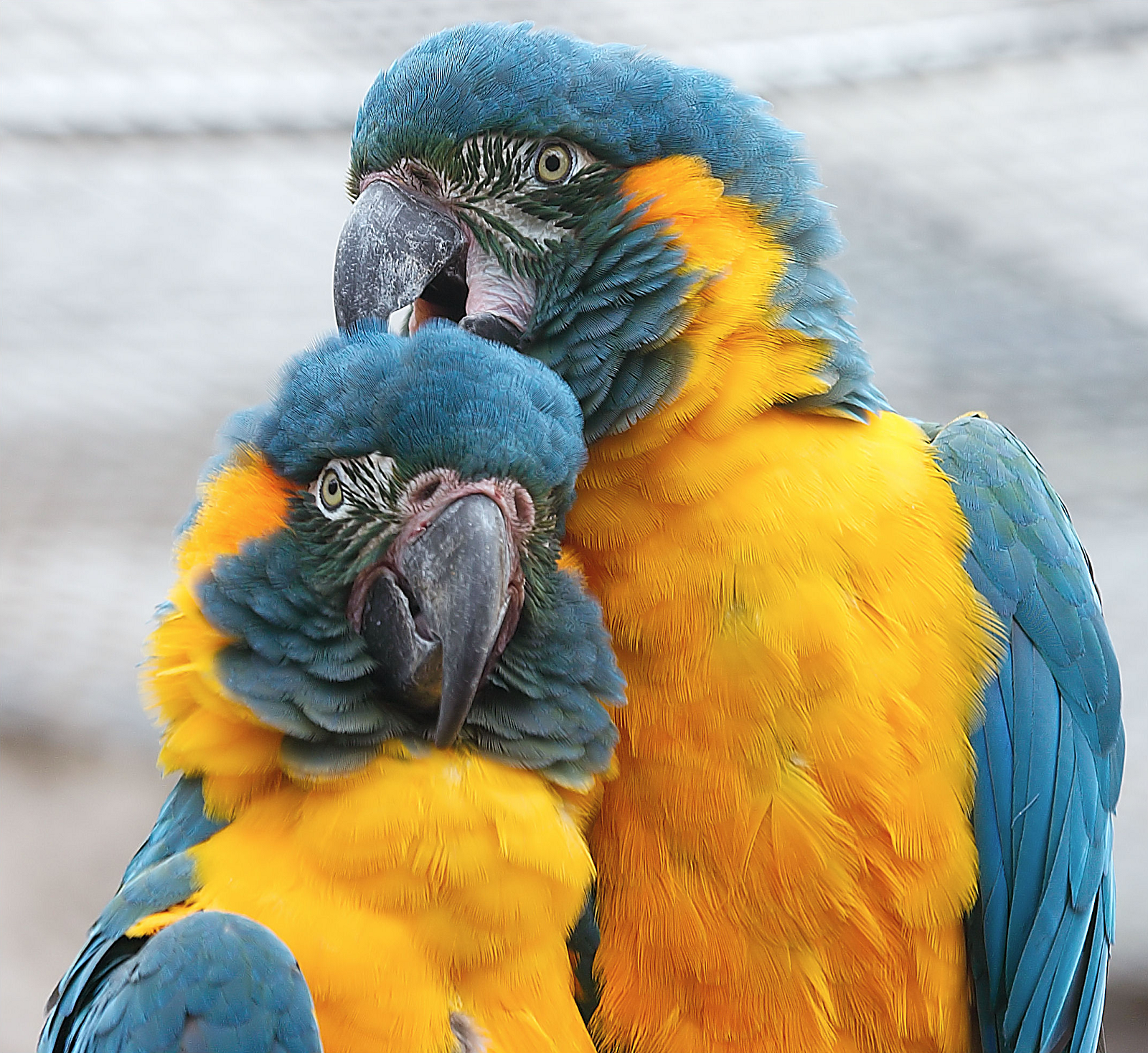
Blue-throated macaw
Macaw glaucogularis: The Scarlet Macaw (Ara glaucogularis), is a species of bird belonging to the family of Psittacidae. It was not rediscovered until 1992.
The humanist Jean de Léry mentions it in his History of a trip made in the land of Brazil in 1578, under the name of canine
blue throated macaw endangered
how many blue macaws are left in the world
As mentioned earlier, the reproduction of the blue-throated macaw is not obvious and the birth of juveniles depends on many factors. The female lays between one and three eggs.
The breeding pair nests in cavities about 30 cm in diameter, rather deep, often inside trunks at the top of dead palms. Ara glaucogularis indeed prefers to establish its nest in vertical cavities, in wood, and benefiting from a rather wide entrance.
But the parents sometimes find themselves in competition with other species of birds who seek to establish their nest in the same places.
This is the case for example of other macaws, toucans, woodpeckers but also bats. This is why nest boxes that perfectly match the criteria of the blue-throated macaw while protecting the young from predators have been placed everywhere on the identified nesting sites.
Note that the northern subpopulation mates towards the end of the dry season, from September to October, while the southern one waits for the onset of the rains, in November, to reproduce.
The carnage caused by the massive captures of specimens intended for the pet trade has been all the more serious as the blue-throated macaw has a rather difficult time raising its young until they reach maturity.
And this, Is for several reasons that scientists have just identified. Between 2007 and 2012, they monitored 30 nests to determine the causes of this difficult reproduction for some pairs.
During the period, 57% did not give birth to any young despite laying eggs, the problems generally occurring during the incubation period.
In the question: diseases – especially when the blue-throated macaw shares the same water points with other birds -, parasites not dangerous for adults but deadly for the young, abandonment on the part of the parents but also predation on the eggs.
The toco toucan (Ramphastos toco), the stilt buzzard (Geranospiza caerulescens), the great horned owl (Bubo virginianus), and the crested caracara (Caracara plancus) indeed represent a threat for the youngest.
Another risk factor for the reproduction of the species: inbreeding. The populations are indeed very fragmented due to the loss of their natural habitat, the small remaining groups suffer from a lack of genetic renewal with the arrival of new individuals, which could lead to a drop in fertility.
My Blue Throated Macaw Talking | Q&A With Jinx!
SOURCE: BirdTricks
The Blue throated macaw, the Caninde macaw or Wagler’s macaw
Division
The Blue throated macaw is endemic to Bolivia. He lives in a gigantic sparsely populated and difficult to explore area, the flooded savannahs of Beni. Under these conditions, it is difficult to specify the exact distribution of the species.
However, the Armonia association, focusing its efforts on this aspect, has more than doubled the number of sites known to host this Macaw and has even discovered a new extension zone located west of the Rio Mamoré and the area distribution history around the city of Trinidad.
Despite the distance which separates the two populations, it is not impossible that exchanges take place thanks to a chain of forest islands2.
what does the blue macaw eat
Ara glaucogularis finds its food in its direct environment, rich in plants. The savannahs where it lives are home to more than 1,500 species of plants, including the Attalea phalerata palm tree which produces the motacú nut, its favorite food.
It sometimes needs a lot of patience and persistence to manage to shell it and extract the flesh, but the mission is made easier by the power and agility of its beak. Sometimes he selects unripe nuts to drink the liquid inside.
The blue-throated macaw also feeds on the fruits of Acrocomia aculeata, another kind of palm more common in the Caribbean and northern Latin America. It can also consume the flowers of certain plants or seeds that have not yet matured.

Threats and protection
This species is critically endangered. The main threat to it is the illegal trafficking of nestlings and adult birds for the aviary trade, despite official protection both locally and internationally.
With the financial support of Cepa and the CDE, those in charge of Armonia are planning to build an ecolodge of the same type as that built for the Ares de Lafresnaye, a structure that would also be a research station for Bolivian academics.
Raising the awareness of the inhabitants of small towns and villages present in the distribution area of the Blue throated macaw is also a concern of Armonia: information centers, environmental education workshops, and radio programs are envisaged.
The aim is also to identify the human problems that contribute to the decline of this macaw and, in cooperation with the inhabitants, to seek short-term solutions to conserve the species.
blue throated macaw size
Description
The blue-throated macaw is a large parrot measuring about 85 cm in adulthood and weighing between 600 and 800 g. There is no sexual dimorphism.
The entire upper part of the animal, namely the back, the top of the head, and the tail, is turquoise blue in color and the lower part – which includes the belly and the underside of the tail – is yellow.
It could easily be confused with its cousin the Ara ararauna, also blue and yellow, but it is differentiated by the blue spot which gives it its name and which covers its throat ., thus contrasting with the yellow that dominates this part of the body.
The ararauna is also slightly larger and it’s tail thicker than Ara glaucogularis. When we observe it with more attention, we can see that the blue that forms a crown around its throat is darker and that of its tail brighter.
The outline of its eyes is, meanwhile, white streaked with dark blue lines and a pinkish skin surrounds its beak. The eyes themselves are yellow in adults and gray in juveniles. The cry of this parrot is strident, both higher-pitched and softer than that of A. ararauna
This bird looks superficially like the Scarlet Macaw. It is distinguished by the absence of green coloring on the forehead and the cap replaced by a sky blue shade,
the areas of white bare skin around the eyes are entirely covered with many blue streaks and especially the blue throat (instead of black), coloration is much more extensive at this level than black in the Blue Macaw.
blue throated macaw price
It takes around 2,000$ for this macaw. You can find it in pet stores but buying it directly from a breeder allows you to see the breeding conditions and get valuable advice.
blue throated macaw lifespan
The blue-throated macaw has a life expectancy of 30 to 40 years in its natural environment. This life expectancy can go up to 60 years in captivity.
Blue-throated macaw Habitat
Ara glaucogularis is an endemic bird of Bolivia. It only lives in a very specific territory of this South American country, in the Llanos de Moxos also called the savannahs of Beni, in the northeast.
It is a huge wetland attached to the Amazon basin, made up of vast tropical savannahs where the climate alternates between a dry period from April to October and a rainy season from November to March.
Two sub-populations share these lands: one to the north on the Río Mamoré side and one further south, in the province of Marabán, near the town of Loreto. In total, the range of the blue-throated macaw extends over approximately 4,000 km².
What Having a Macaw is REALLY Like! | Jinx My Blue Throat Macaw
SOURCE: BirdTricks




















